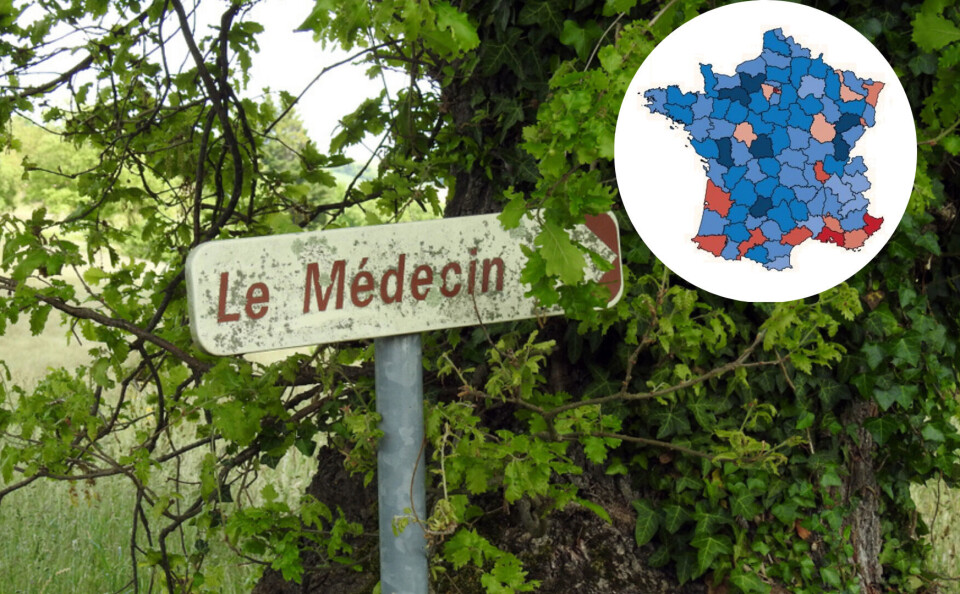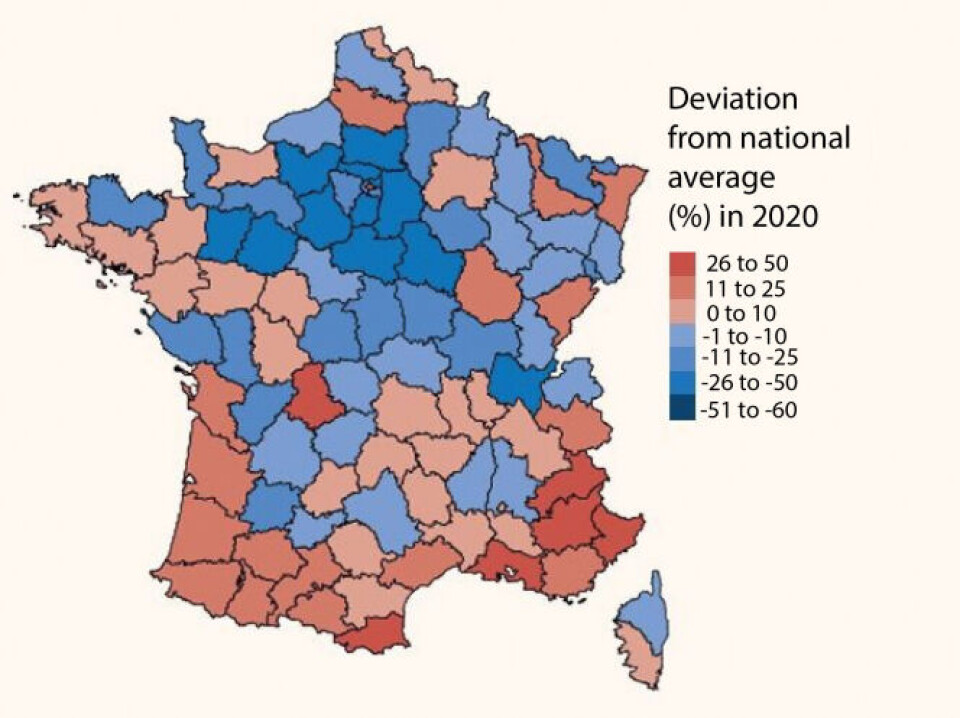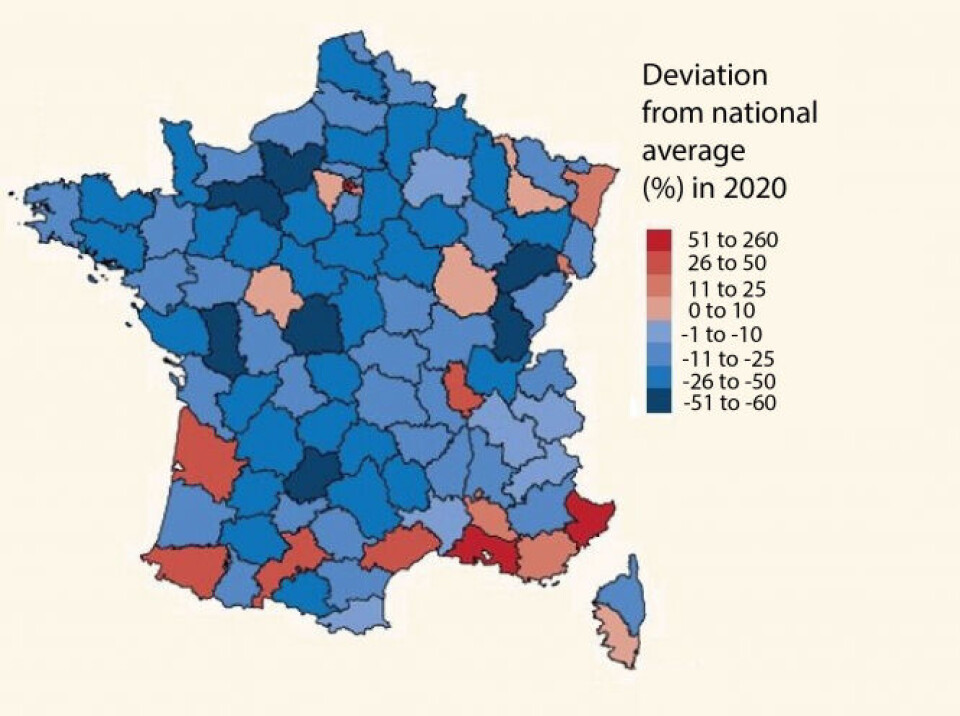-
Top Paris restaurants to sell off 20,000 tableware items
Pieces set to go on sale include glassware, cutlery, and silverware, as well as bistro tables and chairs. Money raised will go in part to charity
-
2025 world economy rankings: France classed above the UK and US
France’s low inflation rate helped it beat many other nations
-
Speed, alcohol, drugs: French ski resorts take action
Behaviour of some skiers a cause for concern as severity of injuries worsens
Which rural areas of France are hardest hit by lack of doctors?
We also look at the countryside departments best served - and the situation for access to health specialists

All rural areas have fewer doctors per 1,000 residents when compared to urban areas, a report by the Association of French rural mayors (AMRF) shows. Many also have twice as few specialists as the cities. We look at which rural areas are most affected by this.
Rural mayors have raised the alert over France’s lack of medical cover in countryside areas for many years, publishing annual reports on different aspects of the issue.
While the causes of France’s unequal distribution of doctors are rooted in the country’s healthcare system, economic structure and geography - and beyond the scope of the AMRF studies - the effects of the disparity are clear.
A 2021 AMFR report, using 2020 data, shows that people in rural areas:
- Consume 20% less medical care than those in urban areas (all ages combined)
- Have 31% less access to chemotherapy and dialysis
- Have two years less life expectancy than those in urban areas
- Have fewer doctors per 1,000 inhabitants, half of whom are older than 55
- Have seen the number of doctors per 1,000 inhabitants fall in 80% of rural areas between 2010 and 2017
Density of GPs in France

The data confirms that Paris and Marseille (Bouches-du Rhône) have significantly higher concentrations of GPs per 1,000 inhabitants. The national average is taken as 1.33 GPs per 1,000 inhabitants.
However, while not as high as in the cities, there are also relatively high concentrations in:
- Haute-Vienne
- Pyrénées-Orientales
- Alpes-de-Haute-Provence
- Hautes-Alpes
The departments with the lowest density of GPs per 1,000 are:
- Ain
- Yonne
- Loiret
- Seine-et-Marne
- Eure-et-Loire
- Essonne
- Eure
- Val-d’Oise
- Oise
- Sarthes
- Mayenne
Density of specialist doctors in France

The AMFR’s data for specialist doctors, such as paediatricians, dermatologists, psychiatrists or anaesthetists, shows an even greater disparity between the major cities Paris, Marseille (Bouches-du-Rhône), Toulouse, (Haute-Garonne), Lyon (Rhône) and Bordeaux (Gironde) and the rest of France.
The national average is taken as 1.9 specialists per 1,000 inhabitants.
Read more: Where can you get the best specialist healthcare in France?
Other departments with high concentrations of specialist doctors are
- Alpes Maritimes
- Hérault
- Pyrénées-Atlantiques
- Territoire de Belfort
- Bas-Rhin
However, of the many areas that fall behind, the worst served for specialists are:
- Eure
- Orne
- Deux Sevres
- Indre
- Lot
- Jura
- Haute-Saône
Which rural departments are the best and worst served for medical care?
The AMFR’s data show a significant north-south divide on medical care.
The Paca region fares well for both GPs and specialists, however in more rural areas such as Alpes-de-Haute-Provence and Hautes-Alpes specialist care is lacking.
Conversely, the Normandy region and Eure in particular fare badly, placed far below the national averages by the AMFR study.
Read more
Top ten healthiest places to live in France listed in new study
France’s medical deserts ‘pushing more GPs to turn away new patients’
























